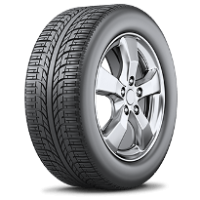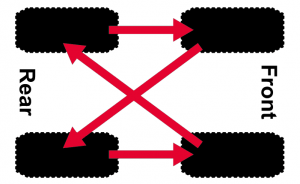Tire rotation service
Tire rotations prolong tire life!

Regular tire rotations can help evenly distribute wear — so you get the most miles out of your tires while maximizing traction on all four wheels and helping prevent flat tires.
Tire rotation in Surrey
Rotating your tires is vital for helping your tires last longer. Rotating your tires suggests changing them from one side of the automobile to the other, relocating them from front to back or a blend of both, depending on your vehicle and what was done previously. Some tires have to be rotated at specific periods, while others will have to be rotated depending on the wear.
Why service is essential
Uneven tread commonly occurs because most vehicles do not distribute weight evenly between the front and rear tires. In general, front tires tend to deteriorate more quickly than rear tires due to their location and the weight of a vehicle’s engine. Routine tire rotations can prevent you from replacing your tires as often. It can also improve your gas mileage as well. This is because well-maintained tires reduce rolling resistance, which affects your vehicle’s performance and gas mileage. Many factors can cause unequal tire wear:
- Strenuous driving routines, stop and go city traffic, road construction, etc. Bumpy surface and pot holes
- Under inflated tires
- Worn Shocks
- Unaligned wheels
- Worn elements
- Not rotating your tires
What we do during tire rotation
Our tire rotation and balancing service involves changing the position of your vehicle’s tires in order to reduce massive tread differentiation between them. Tires tend to exhibit differing amounts of tread wear, because each tire does not deal with exactly the same types or amounts of stress as its companions. Rotating the tires is an effective way to deal with uneven tread wear. By alternating tires according to tire rotation patterns, you can help distribute tread wear more evenly and reduce uneven tread wear.
Depending upon the type of vehicle, you drive and the type of tires on the vehicle, the tire rotation pattern may vary. We may exchange the front tires with one-another, switch the rear tires with one-another, or swap the front and rear tires. If the vehicle has a full-size matching spare tire, it may also be included in the tire rotation.

- Tires are rotated in alternating patterns
- Examine overall quality and safety of tires
- Examine tire tread
- Inspect for effective inflation
- Tighten up lug nuts
Your questions, answered
Tires will wear unevenly on nearly all vehicles over time. To extend the life of your tires and balance the inevitable wear on them, have your tires rotated regularly. Tire rotation spreads the load more evenly across all four tires and supports more balanced handling. It’s a safety issue, too—tires that are overly worn in one spot may make your car or truck more difficult to control in wet or other adverse conditions.
In general, we recommend you get your tires rotated every other oil change or 10,000-12,000km. You should come in for tire rotation sooner, however, if you notice any patterns of excessive wear on any of your tires. Adhering to a schedule of regular rotation can improve your vehicle’s performance, make your tires last longer, and help ensure that all of your tires wear evenly.
When the weight of a tire/wheel assembly isn’t even around the tire, you may notice vibration or bouncing, which can shorten the life of your tread and put undue stress on your car or truck. In general, tire balancing should be done when you buy new tires or have a tire replaced.